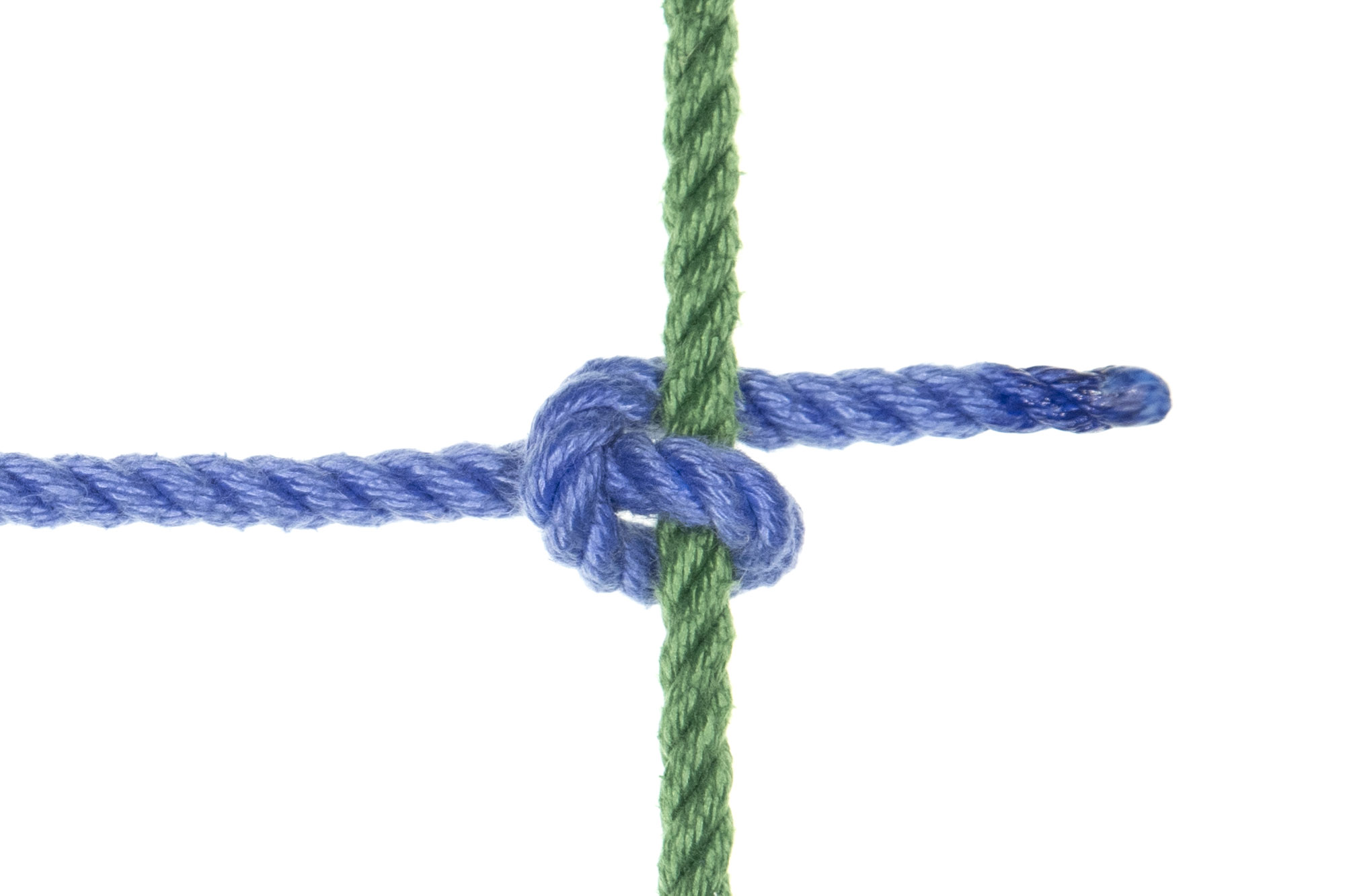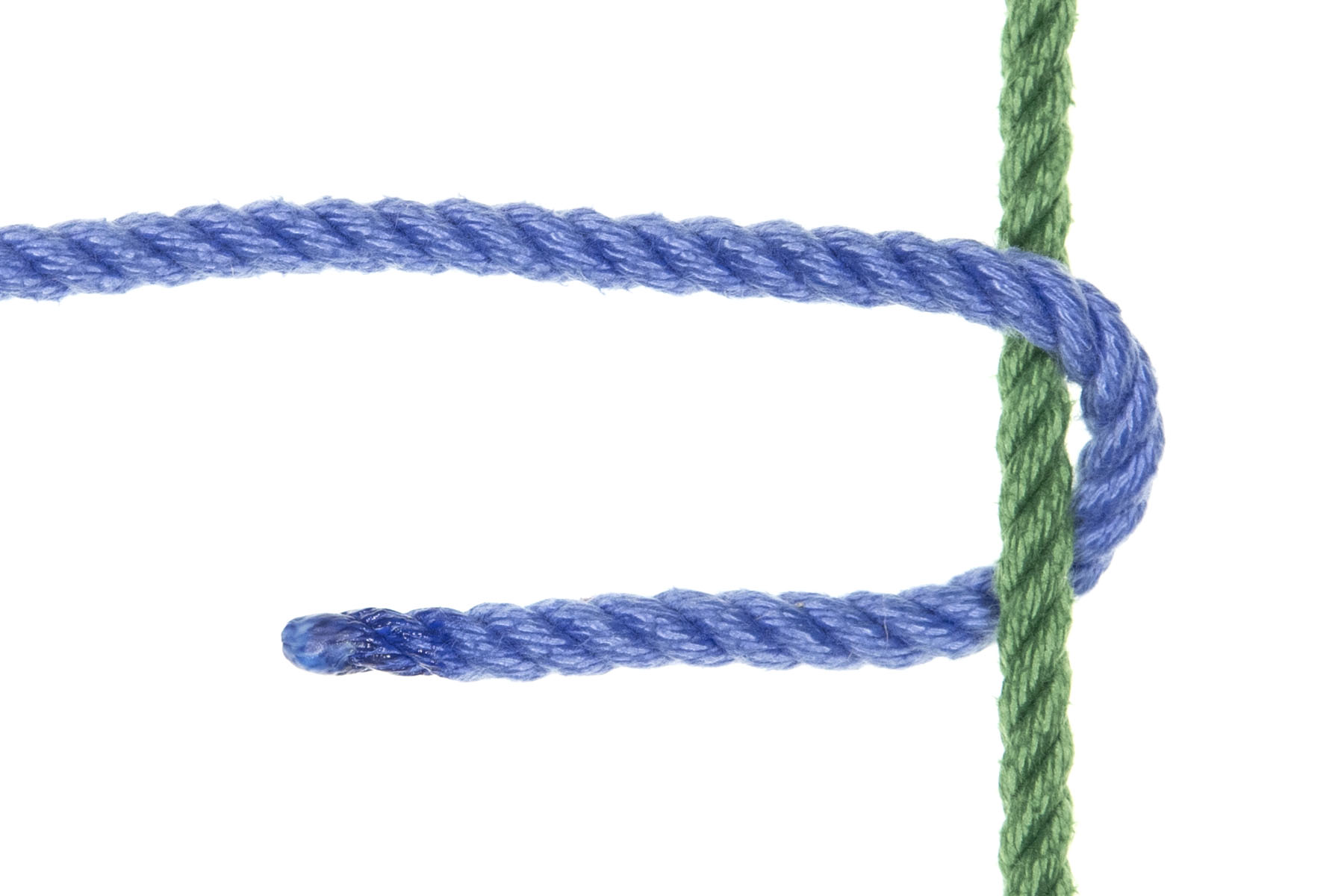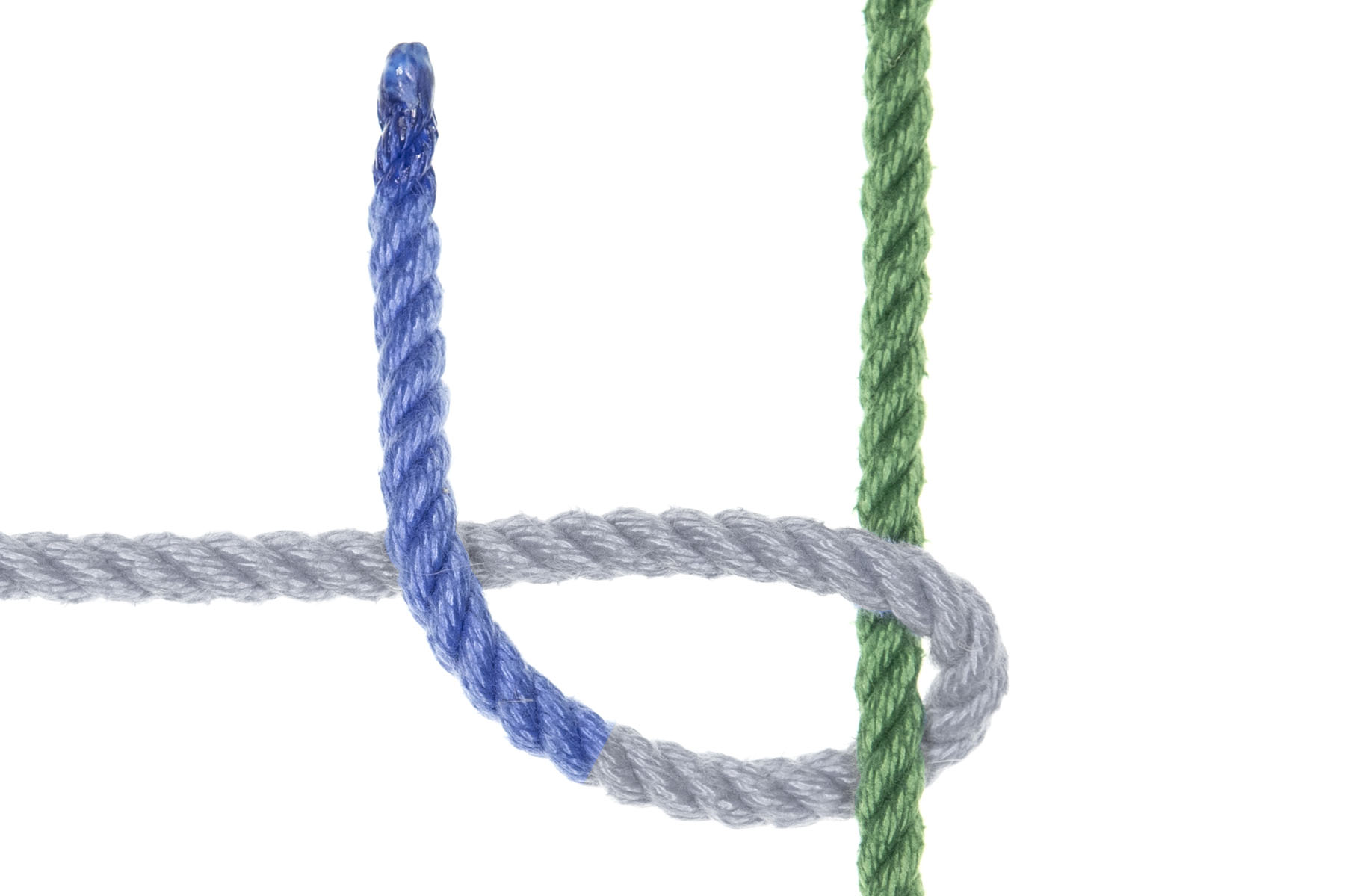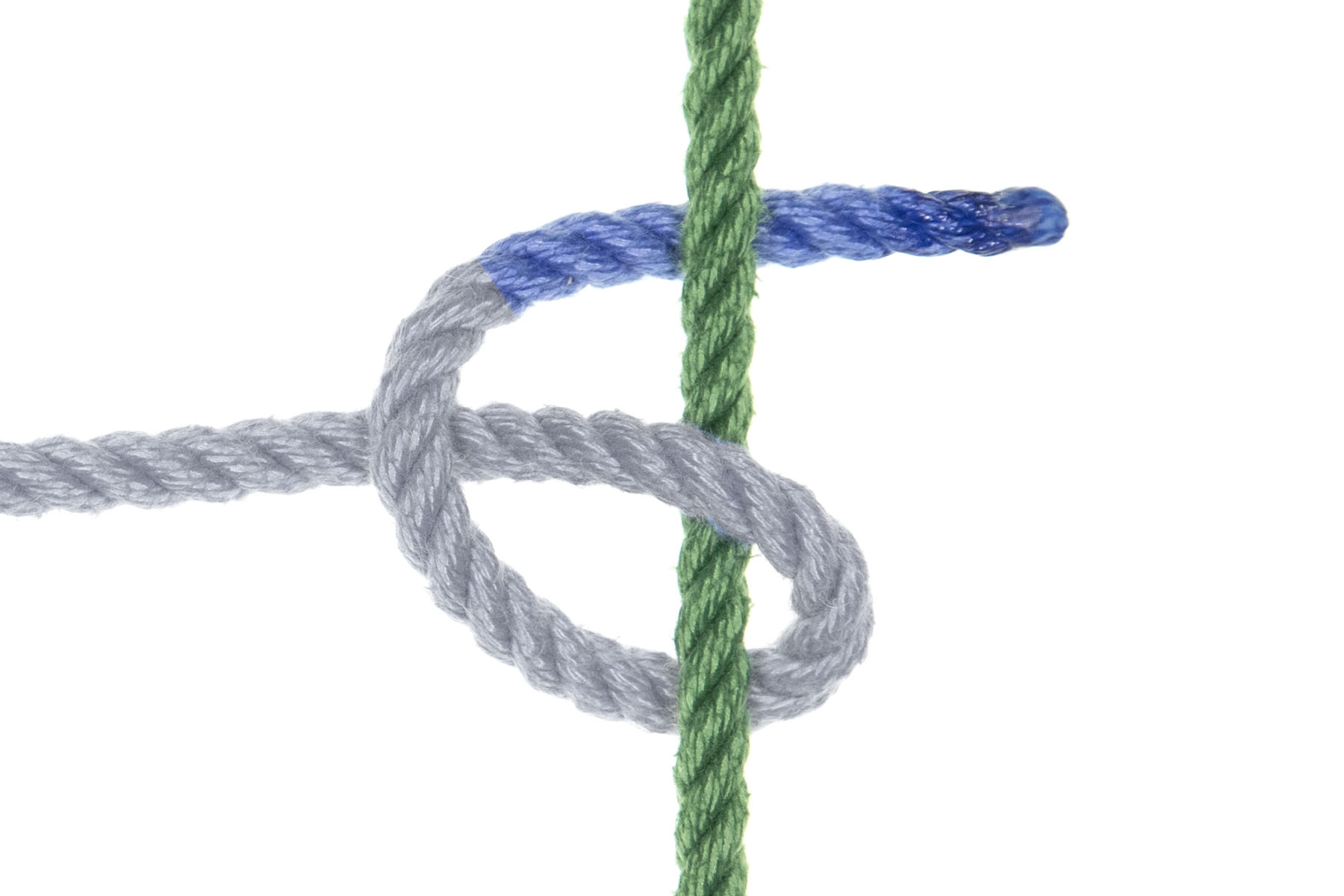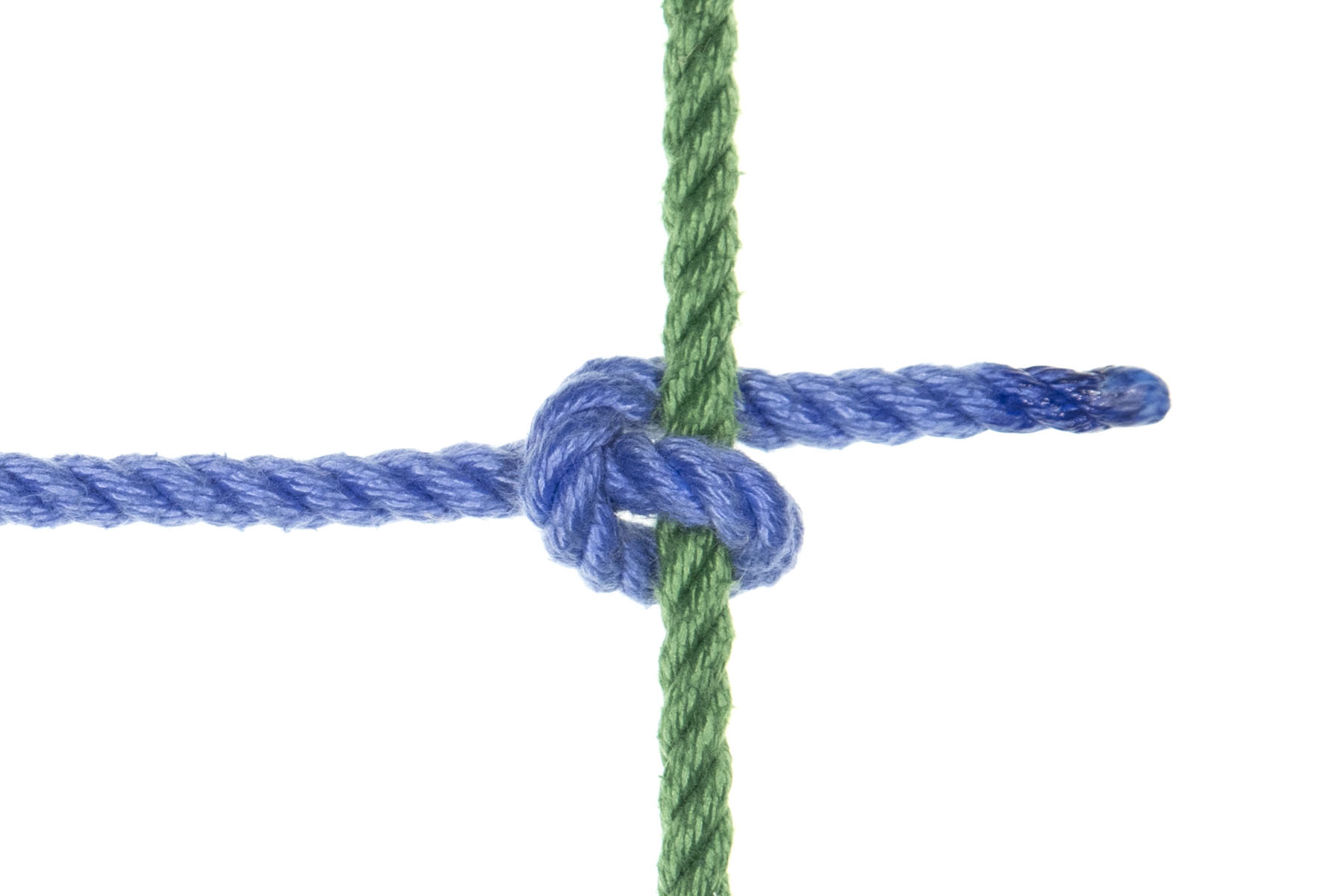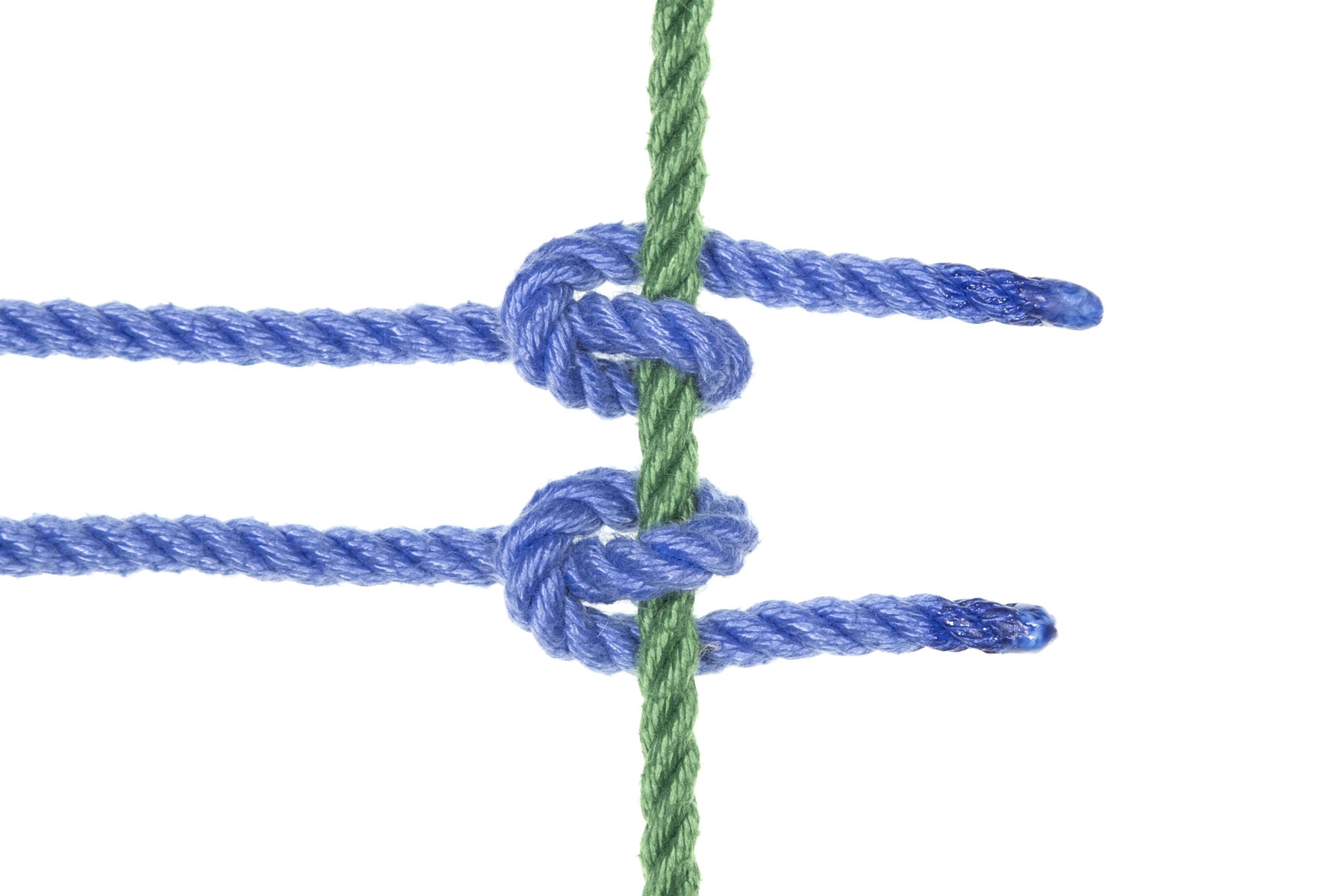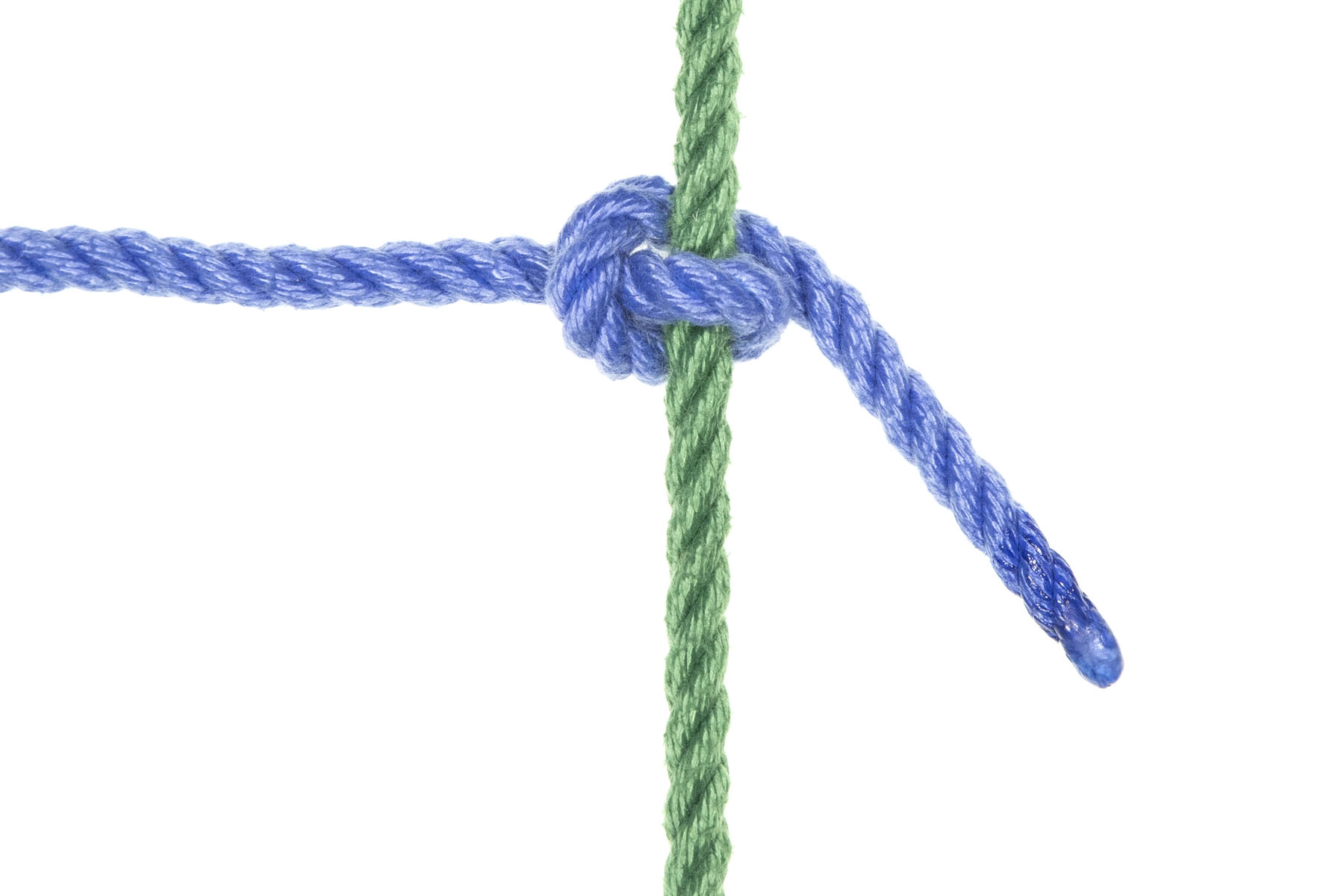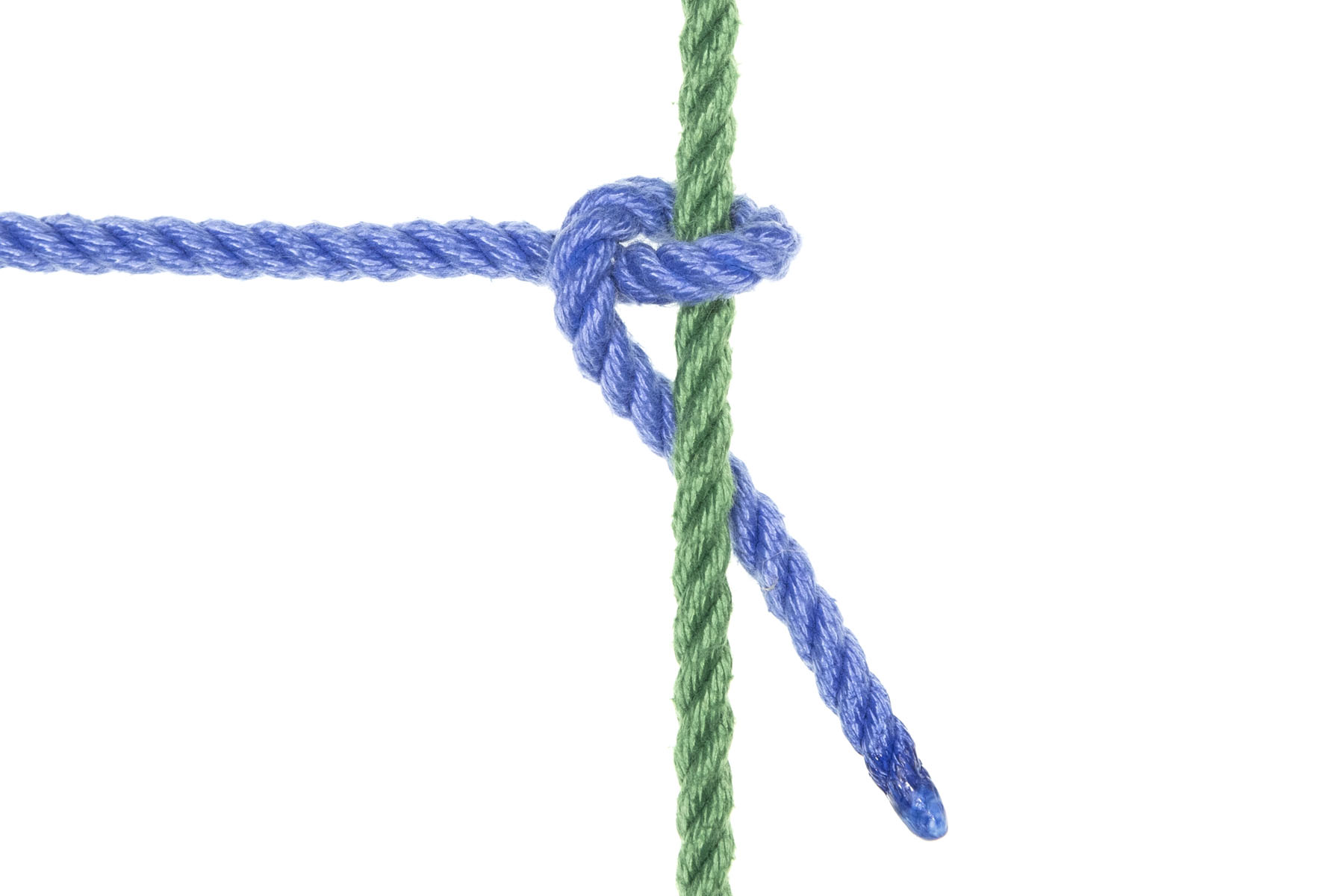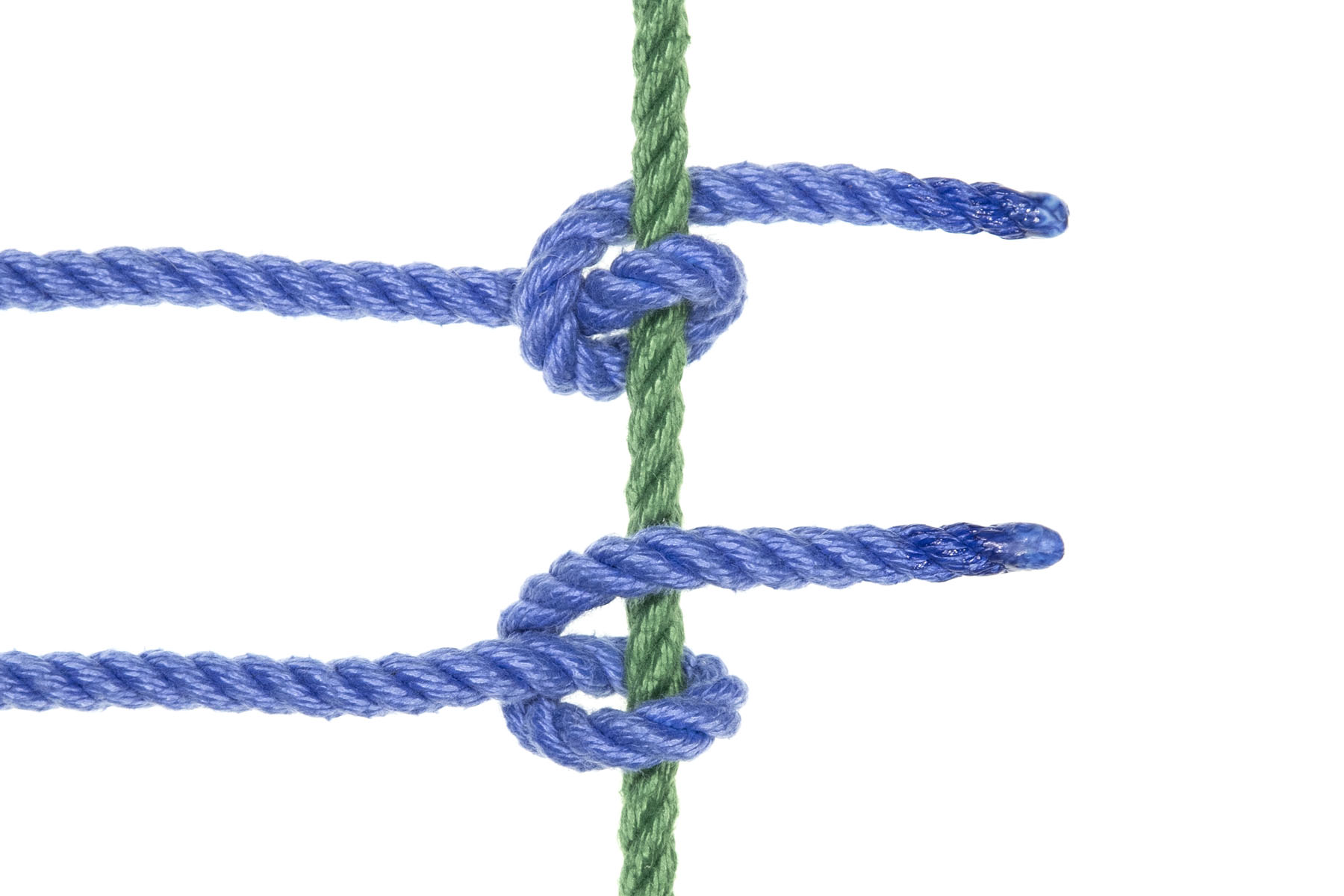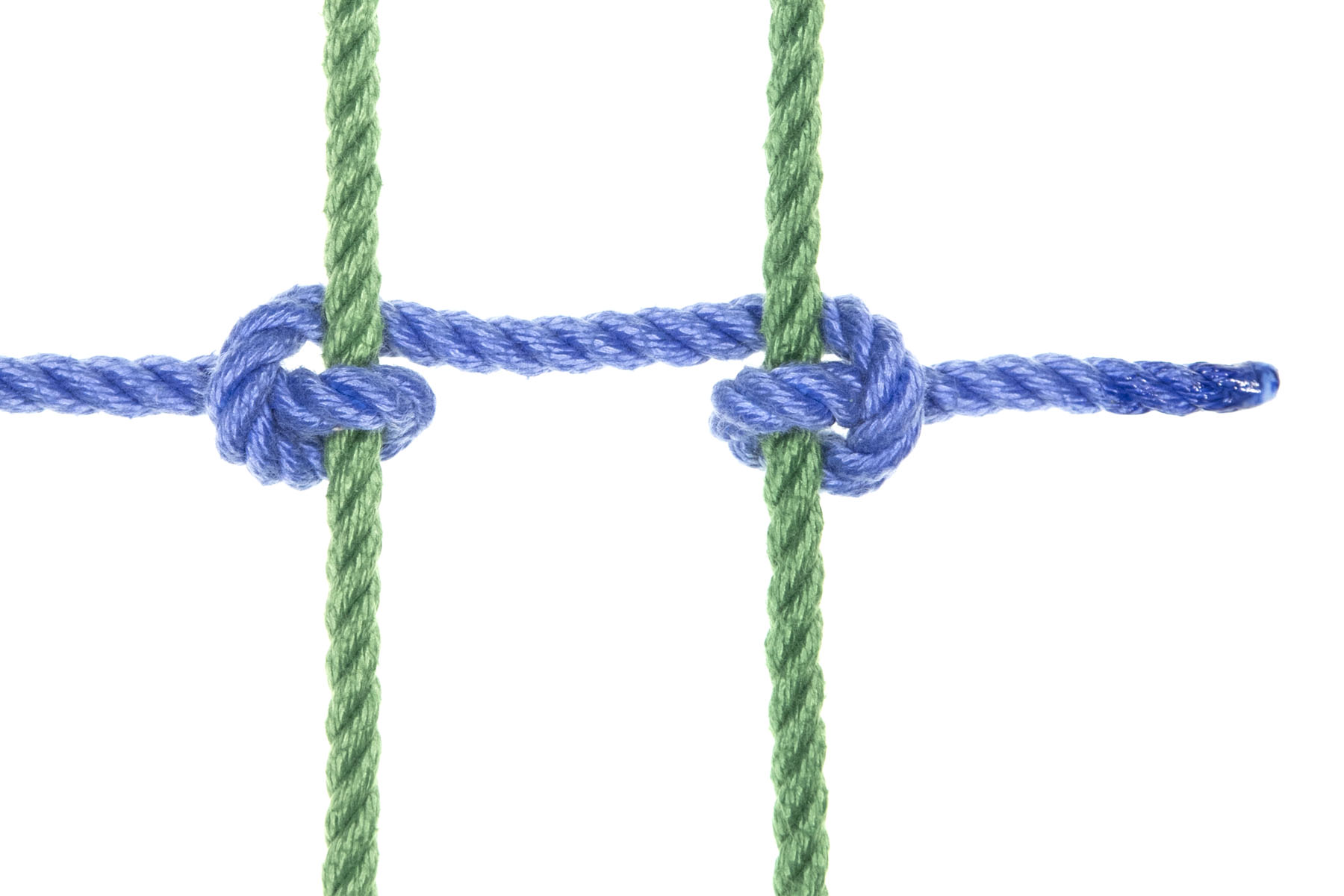Up or down?
In step 1, you can double back above or below the standing part. Which way is better?
If the rope exits the Munter at 90°, either direction is fine. These Munters doubled back on opposite sides and both work well.
If the rope exits at an angle, you should double back on the side where the rope will exit.
